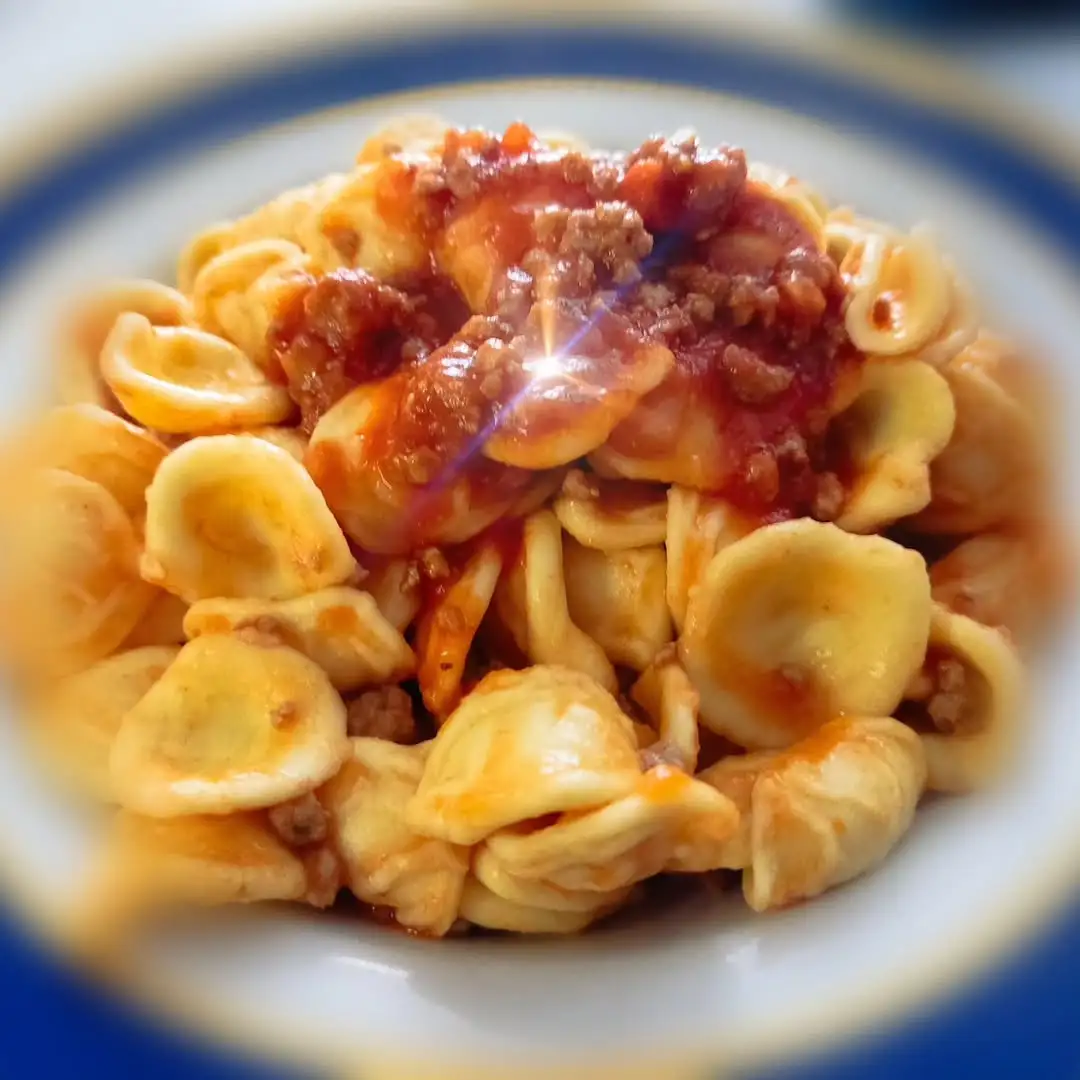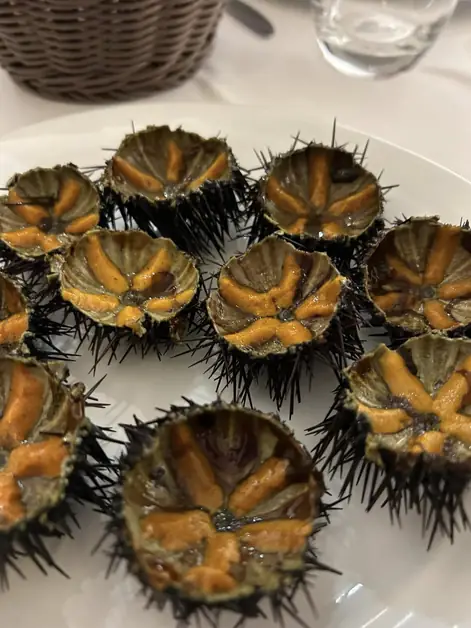Orecchiette with Sauce and Brasciola
A journey into Bari's culinary tradition with orecchiette in sauce and brasciola.

The streets of Bari Vecchia are filled with the aroma of sauce simmering slowly, while the skilled hands of local "signore" prepare the famous orecchiette. This dish, a symbol of Bari's culinary tradition, represents the gastronomic soul of the Apulian capital.
The history of orecchiette dates back to the Middle Ages, when Puglia was under the influence of Norman-Swabian domination. It is said that this pasta shape, with its characteristic concave form resembling small ears (hence the name "orecchiette"), was introduced between the 12th and 13th centuries.
The first written records date back to the 1400s, when it appeared in the registers of the Neapolitan court as "recchietedde". The tradition has remained alive through the centuries, passed down from mother to daughter, until it became the emblem of Bari's cuisine.
Walking through the alleys of Bari Vecchia, particularly in via dell'Arco Basso (nicknamed "the Orecchiette street"), one can observe Bari women preparing this pasta outdoors, displaying their product on wooden tables.
The preparation is simple but requires great skill: durum wheat semolina, water, and a pinch of salt. The technique to achieve the characteristic concave shape with rough edges requires years of practice and a precise, swift thumb movement.
The traditional condiment is a slow-cooked sauce enriched with "brasciola" (or "braciola" in standard Italian). These are meat rolls, usually made from horse or beef, stuffed with a mix of parsley, garlic, pecorino cheese, and sometimes pine nuts.
These rolls are tied with kitchen twine and cooked slowly in tomato sauce for several hours. During cooking, they release all their flavors, creating a rich and fragrant condiment.
For the people of Bari, orecchiette with sauce and brasciola represents the quintessential Sunday dish. Preparation begins early in the morning when the sauce is set to simmer. The aroma that spreads through the houses signals that Sunday has officially begun.
Families gather around the table, where orecchiette are served as the first course, while brasciola constitutes the second, sometimes accompanied by a side of local vegetables.
Every Bari family has its own recipe, with small variations that make it unique. Some add ricotta forte (a spicy aged cheese) to the filling of the brasciola, while others prefer pork to horse meat.
During holidays, the recipe is further enriched with the addition of meatballs in sauce, transforming the dish into a true triumph of flavors.
For those visiting Bari, tasting orecchiette with sauce and brasciola is an unmissable cultural experience. Traditional restaurants in the historic center offer this dish, but even less touristy trattorias in the peripheral neighborhoods preserve the authenticity of the recipe.
For an even more authentic experience, one can participate in cooking classes to learn how to prepare orecchiette by hand, or purchase fresh ones directly from the women of via dell'Arco Basso.
The dish pairs perfectly with a glass of Primitivo di Manduria or Negroamaro, robust red wines from Puglia that balance the richness of the sauce.
To enjoy this dish to the fullest, follow the advice of the locals: use local bread to make the "scarpetta" and scoop up every last drop of that precious red sauce.
Orecchiette with sauce and brasciola is not just a dish of Bari tradition, but a true cultural heritage that tells the story, economy, and social habits of this beautiful coastal city.
Tasting it means embarking on a journey through time and the most authentic traditions of Puglia, a region where food is still deeply connected to the land and the hands that prepare it with love.



